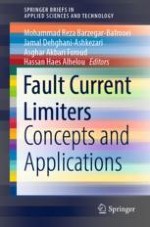This book presents a comprehensive survey of fault current limiters (FCLs) and their applications in power system to cope with the fault current. The book reviews characteristics, technologies, topologies, working principles, applications, and the interaction of FCLs with the power system. In the attempts to develop FCL with close to ideal attributes, academic researchers and companies offer the different configurations that are mostly classified into non-superconducting fault current limiters and superconducting fault current limiters (SFCLs). Both categories are included in this book, and therefore, it can serve as an excellent stepping-stone for senior and/or graduate students who are interested in knowing the reason of the increase in short circuit level in the power system, fault current limitation measures, benefits and drawbacks of the application of FCLs in power systems, the state-of-the-art of fault current limitation techniques, as well as recent advances in this area.
